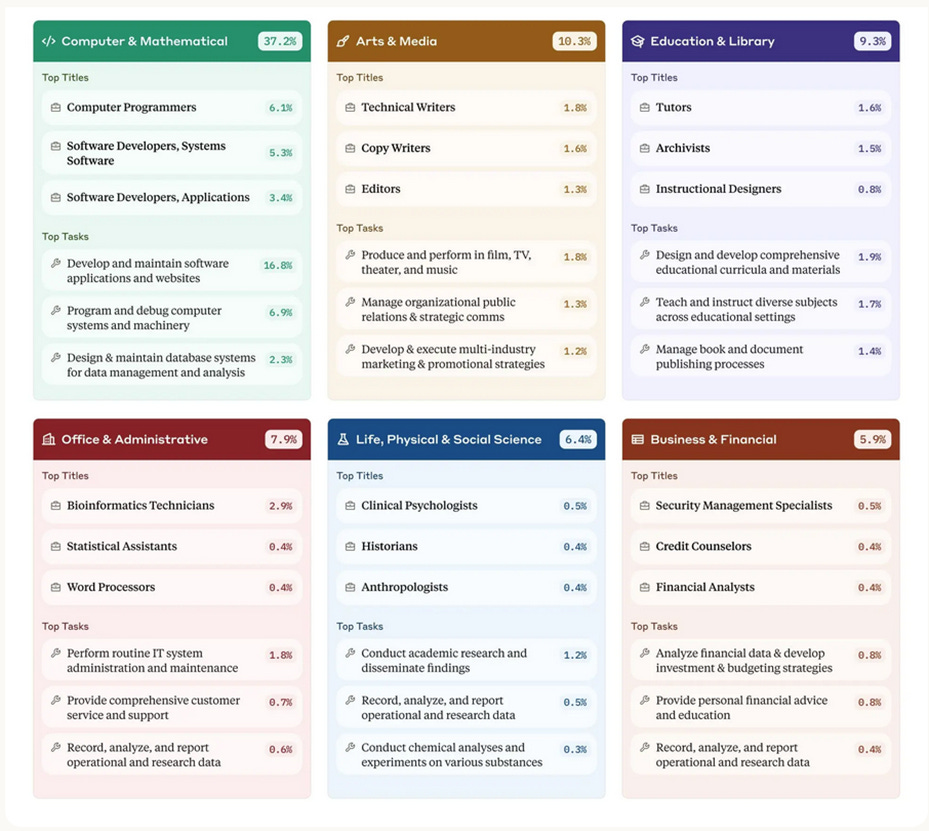Unpacking your workflows
What exactly does your job involve? Can you explain it to a four-year-old?
At some point in the future, my daughter is going to ask me what I actually do for a living. I live in fear of this question. I find it challenging to undertake the classic creative ask of “explain it to me as if I were a five-year-old” (Ivy is nearly four, but the principle applies).
As
puts it in his recent essay:“People are happy to talk about themselves and their jobs, but they do it at this unhelpful, abstract level where they say things like, “oh, I’m the liaison between development and sales”.”
When people ask me what I do, I say I do digital communications for a corporate PR agency. It’s very rare that anyone wants to probe any further. And if they do, I find it hard to get into specifics. I also find that any memory of what clients or projects I’m working on completely disappears from my mind when I’m asked that particular question.
Adam highlights in his piece how this challenge of explaining what we do finds its roots in the phenomenon psychologists call “unpacking”.
It means getting into the nitty-gritty specifics of exactly how something works, the processes and procedures that sit underneath careers and businesses. We flatten “all the little particulars” so that our “imaginations can produce a quick preview of the future, like turning a napkin sketch into a blueprint”.
Adam suggests that one of the reasons people often don’t like their jobs is that they find it hard to unpack what the work will entail before jumping into it. They get an idea in their head (”I’d love to run a little coffee shop”), imagine the fun bits (making coffee, chatting to customers, choosing the music to put on) and disregard that myriad other challenges and issues you might face running a coffee shop (staffing, suppliers, rent).
However, the challenge is that unpacking is hard. You need an element of childlike curiosity to get into the weeds about how something actually works. And even if you get the chance to ask someone working in your ideal profession what it is that they do, they struggle to get beyond those previously mentioned abstract notions and generalities.
Perhaps this difficulty with unpacking is one of the reasons that the deployment of generative AI in many businesses has reached a plateau. According to a recent McKinsey report, eight in ten companies have “deployed gen AI in some form”, but most companies report a lack of material impact.
The McKinsey answer to the “paradox” they highlight is classic lazy techno-optimist thinking - AI agents are the answer!
Based on my conversations with clients about their experiences with generative AI, there are certainly opportunities to utilise custom GPTs, trained on specific data, to help accelerate activities. Copywriting, in particular, benefits from greater specificity. We’ve built a number of client-specific custom GPTs, which use a spreadsheet of previous posts alongside some specific guidance to generate stronger first drafts of social posts and other written materials.
However, simply stating that “agents will solve everything” overlooks the challenge of reorganising many current workflows - or even understanding what our workflows are in the first place.
Anthropic, the makers of Claude, regularly release data showing the most common uses for its services:
Even if we must take this data with a grain of salt (Anthropic will clearly want to manage the story they tell), the most common applications for Claude ring true with wider generative AI experiences. The most popular use cases are found in software development and content production-type tasks.
Coding and asset production tend to be relatively simple workflows, where generative AI can plug in relatively easily. There can’t be many designers or copywriters who enjoy creating 50 different versions of the same asset for different markets or audiences. It’s the kind of task that genAI is perfect for.
Once you get past some of the obvious applications (meeting transcripts, research summaries, first drafts), applications of generative AI in a structured, automated fashion - the kind of fashion that provides a demonstrable productivity gain - can be harder to find.
It takes time and effort to unpack even simple-sounding workflows like “monitoring”, spelling out the nuances and specificity involved in those kinds of tasks. Monitoring is often the first workflow that comes to mind for agencies and comms teams when they think about automating tasks.
And in theory, it should be an easy one for genAI to deliver. The lived experience that I’ve heard shows that isn’t the case. A client recently informed me that their attempts to completely automate their media monitoring efforts ended in a cancelled contract due to poor-quality outputs. Our experience at Headland was better, but involved custom coding a Google Sheet to make it work.
We’re undoubtedly seeing and hearing great feedback from our teams using ChatGPT for their work. We’re certainly exploring avenues to transform certain workflows and make them more automated. But the answer isn’t JUST more technology (it rarely is).
There needs to be a degree of self-analysis among agencies and comms teams, unpacking exactly what they do every day. Undertaking such a process can feel uncomfortable and unintuitive, but it’s worth the pain. Both in terms of improving our work life, but also in making them more easily understandable by our friends and family, no matter how young they might be.

